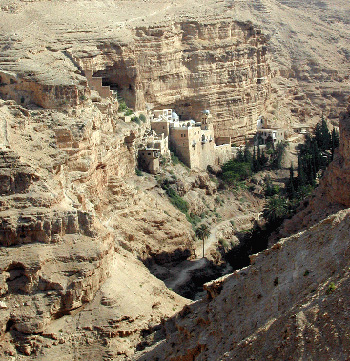|
 Eventually, such men as Jerome, Basil, and Martin of Tours refined the ideals of monastic life, with a basic call to personal holiness and withdrawal from the secular world. Eventually, such men as Jerome, Basil, and Martin of Tours refined the ideals of monastic life, with a basic call to personal holiness and withdrawal from the secular world.
Monasteries began to pop up all around the Mediterranean, and took a firm hold in the Western Church.
Of higher import was Benedict of Nursia who, in the 6th century, founded the Benedictine Order at Monte Cassino, in central Italy. With its focus on service in holiness to God rather than merely on a harsh lifestyle. In the Benedictine Order, the abbot was spiritual father of the community, and when a monk was accepted into the order, he had to remain there for the rest of his life, his days divided between labor, prayer, meals, and sleep.
In time, monastic practice fell into disrepute, and monks became known for depravity, immorality, and for their involvement in matters of state.
Reform
Countless reform movements sought to stem the decay. One center of reform was the Abbey of Cluny, in central France. A succession of abbots led their community into greater levels of devotion, and to a more disciplined worship. The model that was established in Cluny spread to other monasteries, bringing new vitality to the monastic movement.
The 12th century brought more reforms, along with new monastic orders. The Carthusians, in AD 1084, put a new emphasis on withdrawal. The Cistercians, established in 1098, called monks to a life of simplicity built up around a life of agriculture and worship.

|
